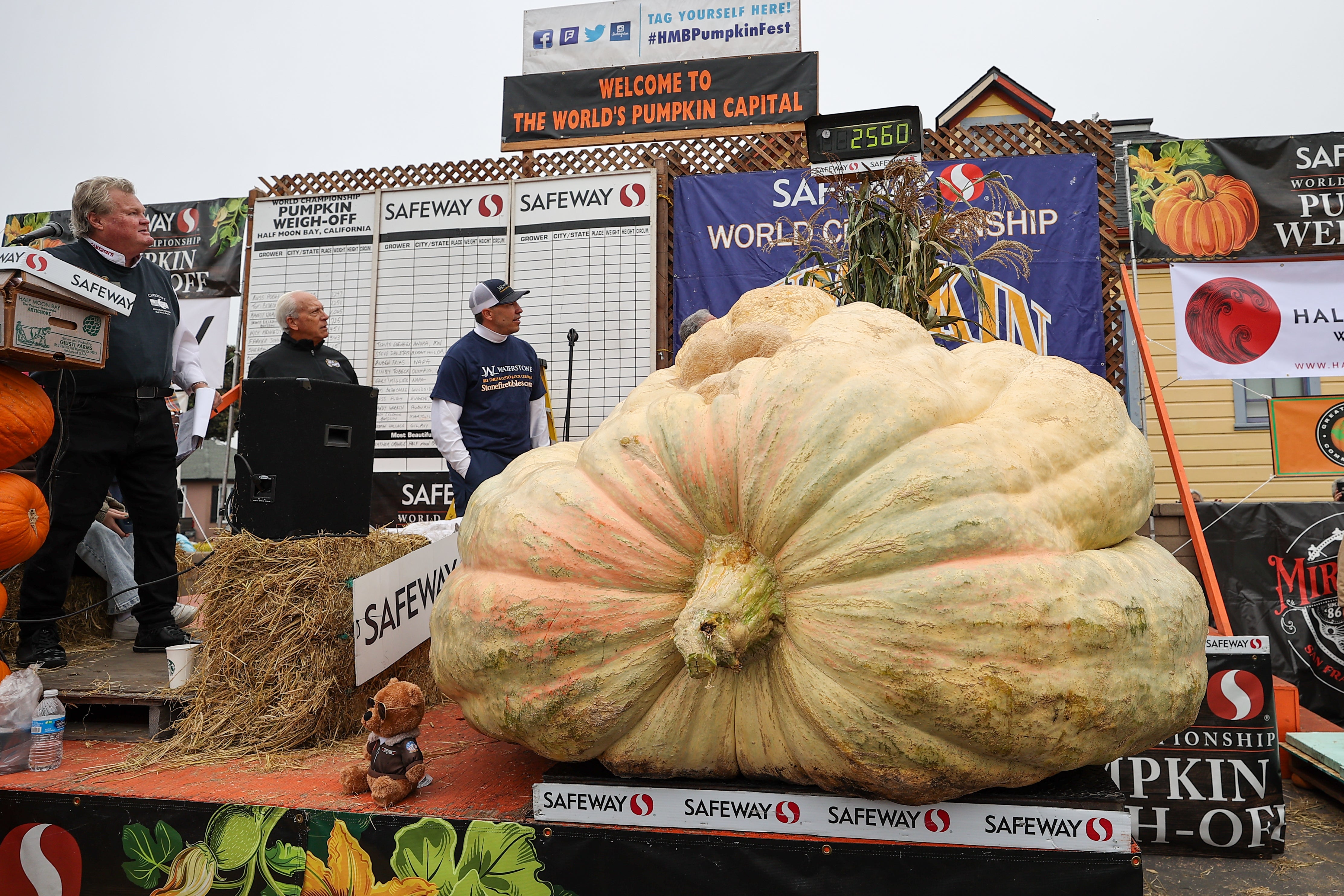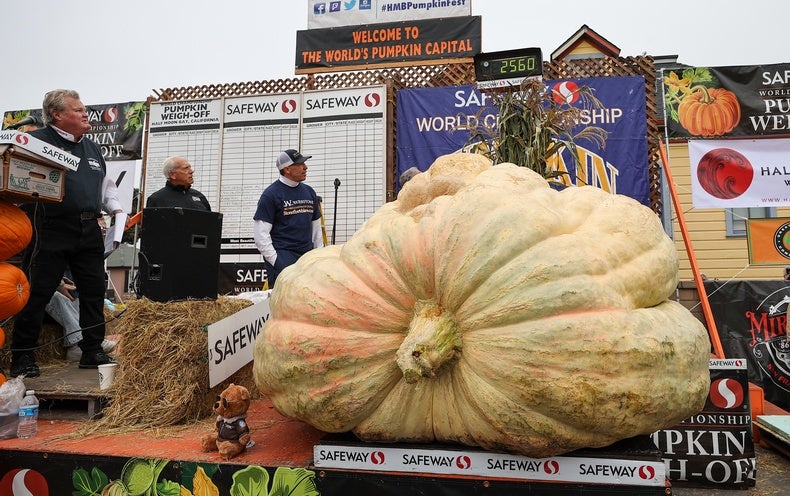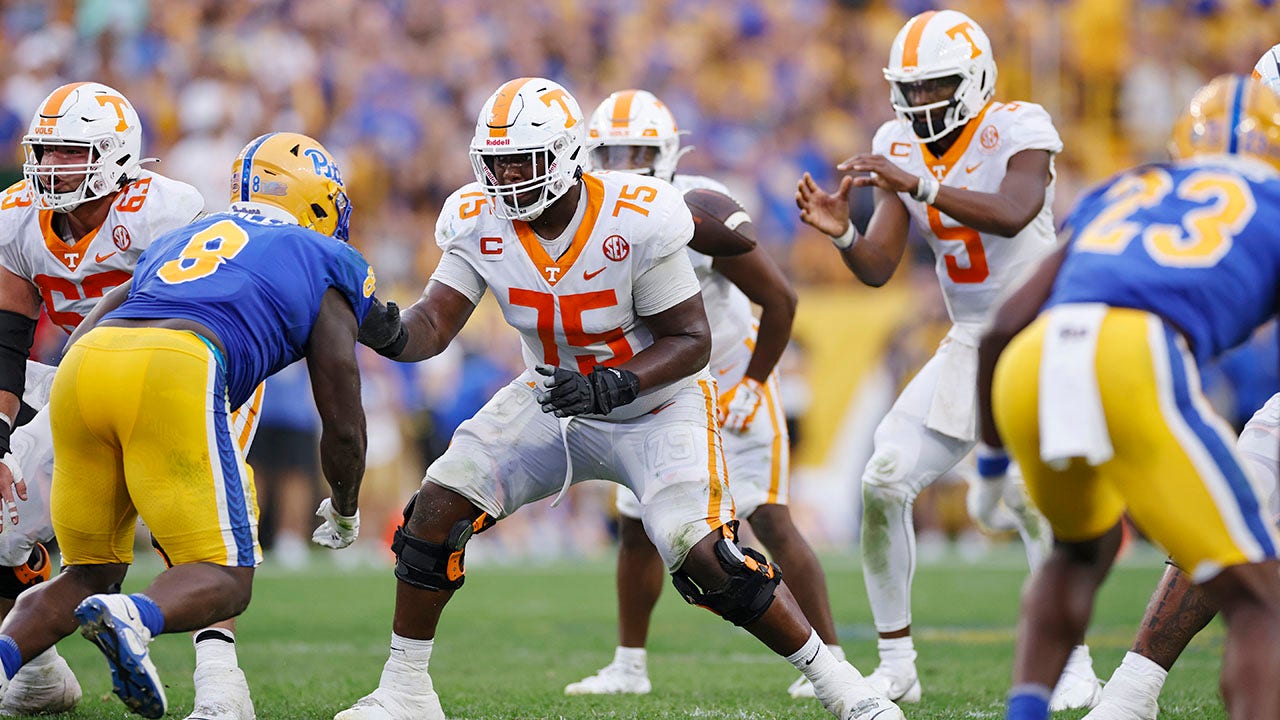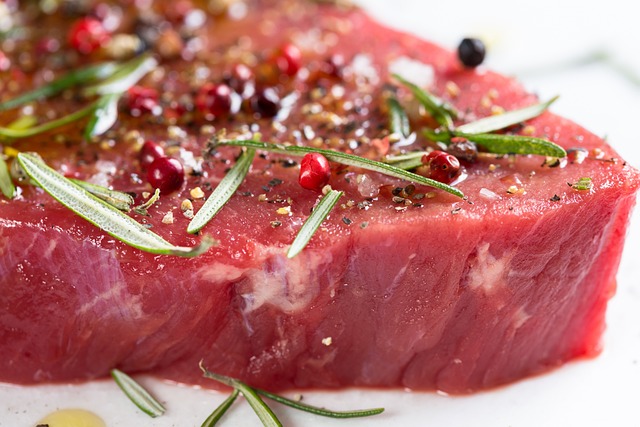
In early October Travis Gienger hauled an enormous white-and-orange monstrosity of a pumpkin from his home in Minnesota to a championship weigh off in Half Moon Bay, Calif. There Gienger was crowned the winner—and his pumpkin, called “Maverick,” set the record for the biggest one ever grown in North America. It weighed 2,560 pounds and won him a total of $23,040, at $9 per pound.
Gienger’s Maverick is part of a trend in prizewinning pumpkins, which keep getting bigger and bigger. In 1900 the heaviest pumpkin on record weighed 400 pounds. The first one to exceed 1,000 pounds was unveiled in 1996, and the 2,000-pound threshold was crossed in 2012. Now 3,000 pounds doesn’t seem too far out of reach: the current world record belongs to an Italian grower who produced a 2,702-pound pumpkin in 2021.
How do competitive growers get their pumpkins to swell to massive sizes? And what’s unique about pumpkins—compared with other crops—that allows for such growth? Biology has the answers.
Gienger, who teaches horticulture at Anoka Technical College, says he begins growing his pumpkins in mid-April, starting with seeds that he grows indoors for the first few weeks, when Minnesota’s soil is too frosty. Once it warms up, Gienger transfers the plants outside, where they can soak up sunlight, nutrients from the soil and water—lots of water. “At the peak, you’re watering maybe 150 gallons, 200 gallons a day,” he says, and that’s per pumpkin. The fruits are about 90 percent water, so it’s not surprising that water is a crucial ingredient for massive growth.
Depending on the variety, pumpkin plants can grow up to a dozen fruits on a single vine. But to maximize size, growers remove all but one or two of these pumpkins in order to decrease competition for resources, says Robert Westerfield, a horticulturist at the University of Georgia. (Gienger, for example, grows only one pumpkin per plant.) For the same reason—competition for limited resources—growers also remove any weeds in the area, Westerfield adds.
But what exactly happens inside a pumpkin as it grows? “Ultimately the size of any organ—in this case, a pumpkin fruit—is due to the number of cells and the size of the cells,” says Rebecca Grumet, a plant biologist at Michigan State University. In other words, two factors drive natural growth: cell division and cell expansion.
Cell division accounts for most of the growth at the beginning of a fruit’s life, Grumet says. This cell-division period lasts for about 20 days in pumpkin plants. In comparison, the period is just four to five days in cucumber fruits, which are also part of the gourd family but don’t grow so large, she says.
Once cell division stops, cell expansion is responsible for continued growth, Grumet says. Cucumber cells will expand until around 20 days after pollination. In pumpkins, however, that number is more like 50 or 60 days, letting pumpkins develop larger cells than other fruits, she explains.
Champion growers aim to extend the natural pumpkin growth period for as long as possible. Gienger says that his 2,560-pound pumpkin continued to grow for about 120 days, including both the division and expansion phases—though it had only a small day-by-day increase at the end of that period. The pumpkin probably could have grown even larger, Gienger says, but he had to harvest it in time for the weigh off in California. Plus, growing a pumpkin for too long risks it splitting open.
A fruit’s growth is also determined by how much sugar gets transported to it, as opposed to other plant structures such as leaves, stem and roots. Internal vesicles called phloem carry sugar to fruits, and research indicates that pumpkins have more dedicated phloem tissue than most plants, helping them grow even larger. And giant pumpkins seem to have even more phloem tissue than smaller pumpkin varieties, Grumet adds.
Additionally, hormones can play a key role in growth, says Courtney Hollender, a plant biologist also at Michigan State University. In particular, gibberellic acid, or GA, a natural hormone, stimulates both cell growth and cell elongation. Naturally higher levels of GA could drive fruits to grow unexpectedly large, Hollender says, and farmers who treat their crops with GA sprays can expect to see larger ones. (Such sprays are allowed in pumpkin-growing competitions, Gienger says, but he notes that his own process doesn’t use GA.)
Genetics also influences pumpkin growth. There are a wide variety of pumpkins, and some will never grow large, while others have been bred specifically to maximize their size, Westerfield says. (Some very large pumpkin varieties have names such as Prizewinner and Big Moose.) But the variety that most competitive growers favor today is called the Atlantic Giant. It was created by a Canadian pumpkin breeder named Howard Dill in the 1970s. Gienger’s North American record setter was an Atlantic Giant.
Still, there’s genetic variation even among pumpkins of the same variety, Westerfield says. Some Atlantic Giant seeds are more primed for growth than others. This variability has led competitive pumpkin growers to place a high value on the best seeds. Following each harvest, many growers auction off the seeds from their biggest pumpkins for planting the following year, Gienger says.
Gienger grew a 2,350-pound pumpkin a couple years ago and sold individual seeds from it for $175 each. He says he’ll put the seeds from his new prizewinner up for auction, too. But he isn’t sure if he’ll use those seeds in his own harvest next year.
“I don’t typically grow my own seeds,” Gienger says. He prefers to scout the market for seeds with the greatest potential for growth. The ideal candidates, he says, are those from a pumpkin that grew to a massive size under a novice grower. Because the grower was new to the game, their pumpkin’s growth was probably more attributable to good genetics than ideal farming practices, Gienger says.
Is there a limit to how big pumpkins can grow? “I don’t know the answer to that, nor do I think anyone does,” Gienger says. “I would say, in my lifetime, we might see 4,000 pounds.”
Hollender says that research has shown there’s a limit to how big cells can grow, so there must be an upper bound on how big pumpkins can get in the future. “What that limit is, I don’t really know,” she says, “but you’re never going to get a pumpkin as big as a house.”


























































